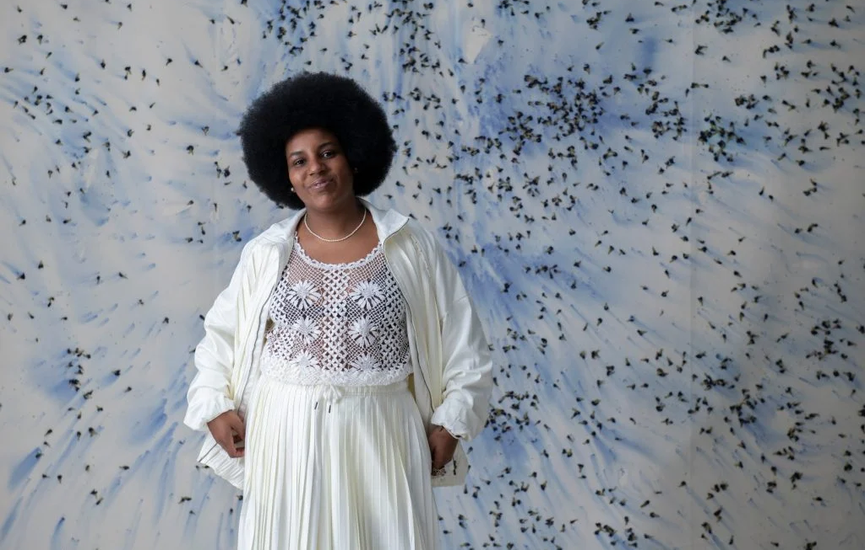The Pinacoteca de São Paulo, one of Brazil’s most respected art institutions, has partnered with the Chanel Culture Fund to launch a new annual residency program dedicated to supporting emerging women artists. This collaborative initiative offers selected artists not only financial and institutional backing, but also studio space, curatorial mentorship, and the opportunity to exhibit their work at the museum. Designed to amplify the voices of underrepresented artists, the residency is part of Chanel’s broader commitment to cultural advancement and gender equity in the arts.
Juliana dos Santos has been named the inaugural artist-in-residence, debuting her work in an exhibition titled "Temporã." Her practice centers on color, perception, and transformation, using natural, plant-based pigments, including vibrant blue hues extracted from Clitoria ternatea flowers. Her residency also incorporated community participation through workshops where members of the public collaborated in applying organic pigments like brazilwood, yerba mate, and catuaba to large canvases. The artworks were then left to oxidize and shift over time, creating evolving pieces that reflect both nature’s rhythms and communal creation.
The partnership with Chanel marks a significant step for the Pinacoteca, positioning it not only as a space for exhibition but as a dynamic site for artistic production. The three-year commitment from Chanel ensures that the residency will continue to support new voices, giving women artists the resources and global platform needed to expand their practice. Participants in the program will also gain access to Chanel’s international Art Partner network, which spans over 40 cultural institutions in 15 countries, providing further exposure and opportunities for artistic exchange.
For dos Santos, the residency offered more than just visibility, it provided the crucial support and space to fully develop her experimental artistic vision. Her work serves as a testament to the power of traditional knowledge, ecological awareness, and the transformative potential of art rooted in community and identity. As the residency unfolds over the coming years, it promises to become a vital platform for elevating Latin American women artists and deepening global conversations about art, environment, and empowerment.
